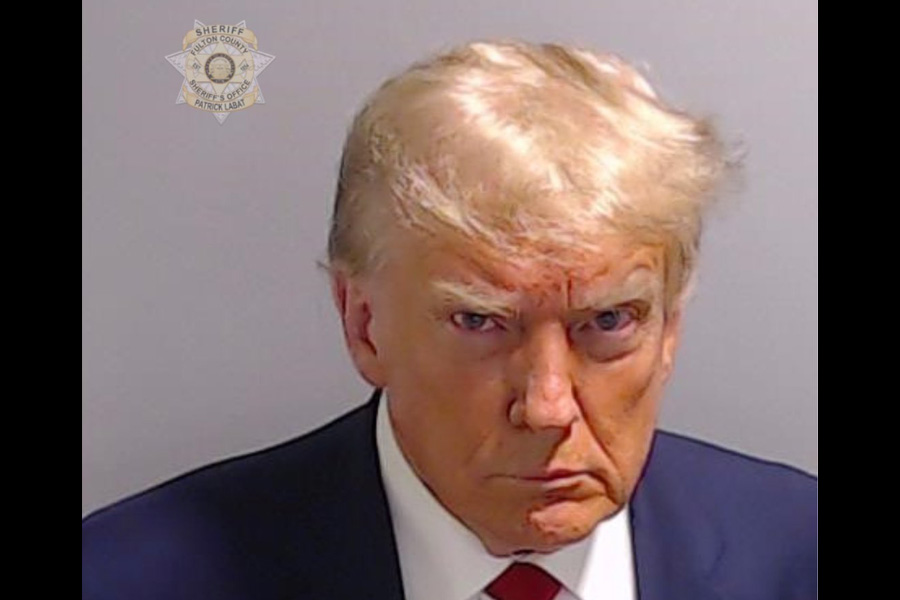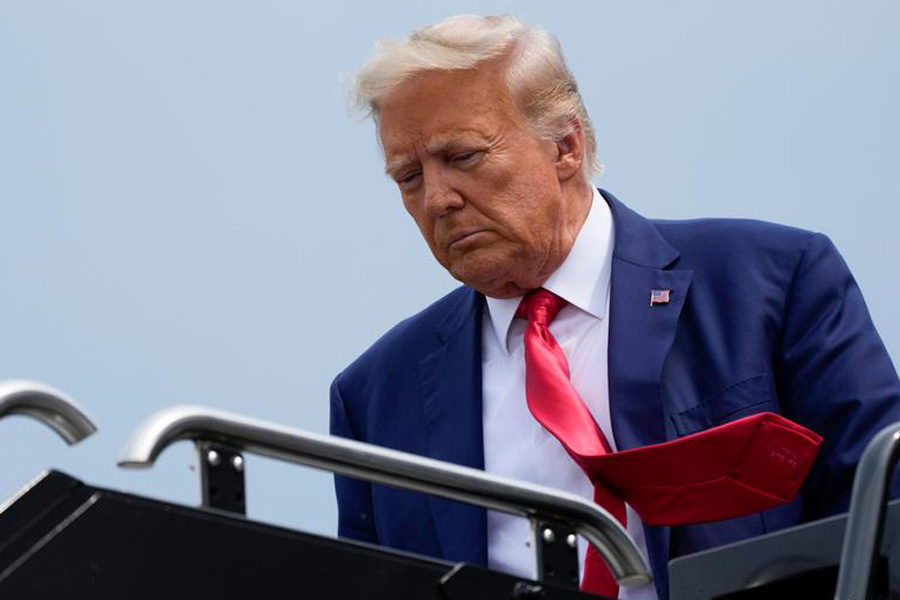As soon as it was taken, it became the de facto picture of the year. A historic image that will be seared into the public record and referred to for perpetuity — the first mug shot of an American president, taken by the Fulton County, Georgia, Sheriff’s Office after Donald Trump’s fourth indictment. Though because it is also the only mug shot, it may be representative of all of the charges.
As such, it is also a symbol of either equality under the law or the abuse of it — the ultimate memento of a norm-shattering presidency and this social media-obsessed, factionalized age.
“It’s dramatically unprecedented,” said Sean Wilentz, a professor of American history at Princeton University. “Of all the millions, maybe billions of photos taken of Donald Trump, this could stand as the most famous. Or notorious.” It is possible, he added, that in the future the mug shot will seem the ultimate bookend to a political arc in the United States that began decades ago, with Richard Nixon’s “I am not a crook.”
In the photo, Trump is posed against a plain gray backdrop, just like the 11 of his fellow defendants whose mug shots were taken before him, including Mark Meadows, Sidney Powell and Rudy Giuliani.
As with them, his face is lit from above by a blinding white flash that hits his ash blond hair like a spotlight. As usual, he is dressed in the colors of the American flag: navy suit, white shirt, bright red tie — though his typical flag lapel pin is either absent or invisible in the picture. He glowers out from beneath his brows, unsmiling, eyes rendered oddly bloodshot, brow furrowed, chin tucked in, as if he is about to head-butt the camera. The image is stark, shorn of the flags and fancy that have been Trump’s preferred framings for photo ops at Mar-a-Lago or Trump Tower, or during his term in office, and that communicate power and the gilded glow of success.
Was the photo necessary? In the last few years, a number of police departments and newsrooms around the country have been rethinking the practice of releasing mug shots to the public, viewing them as prejudicial at a time when a subject has not yet been proved guilty. The prosecutors in the other three Trump cases, both state and federal, have refrained from taking mug shots of Trump at all, given that he is one of the most recognizable people in the world and not considered a flight risk. Georgia laws, however, dictate that a mug shot be taken for a felony offense, and the Georgia sheriff in charge of booking has said that all defendants will be treated equally.
Either way, it is part of the pageantry of the moment, part of the theater of law. And Trump is a man who has always understood the power and language of theater. Of putting on a show. Of the way an image can be used for viral communication and opinion-making.
That’s part of why the “would they or wouldn’t they” discussion about mug shots resurfaced each time an indictment was handed down. In its concrete reality, the Fulton County mug shot may seem more irrevocable than anything else that has happened in the Trump cases thus far — at least until the two sides enter a courtroom. Perhaps that is why the concept alone started trending on X, the platform formerly known as Twitter, even before Trump had boarded a plane to Georgia to surrender.
While very few voters are likely to have read any of the Trump indictments in full, they will almost all definitely see the mug shot, and the former president — who posted this one on his recently reinstated feed on X, not long after it was released — cares deeply about his pictures. He always has.
As far back as 2016, he was complaining about photos of him that NBC had used, especially one that he said showed him with a double chin. In 2017 he tweeted about a CNN book on the election: “Hope it does well but used worst cover photo of me!” In 2020, when a snap of him on the White House lawn with his hair blown back in the wind went viral, he chimed in: “More Fake News. This was photoshopped, obviously, but the wind was strong and the hair looks good? Anything to demean!”
And earlier this month on Truth Social, he said of the Fox News show “Fox & Friends,” “They purposely show the absolutely worst pictures of me, especially the big ‘orange’ one with my chin pulled way back.” (The picture he seemed upset about showed him with his chin tucked in, rather than jutting out, creating the appearance of a few extra chins.) The suggestion was that this was part of the reason he would not join the first Republican primary debate.
He has crowed about how generals advising him were “better looking than Tom Cruise and stronger”; insisted that the women who work for him should “dress like women,” according to Axios; and griped that Vogue never gave Melania a cover while he was in the White House.
He knows that for an electorate raised on TV and social media, the picture is what lasts. It’s what is remembered (and what is memed). What makes the myth. Or unmakes it. Words come and go, but imagery is a language everyone can understand. And this latest image is clear proof of a situation that is not within the former president’s control. It cannot be airbrushed or filtered or otherwise altered.
Now that it exists, however, how it will be interpreted and used is still a question.
Mug shots have, through history, been weaponized in different ways. They have been used to suggest guilt and shame, and to knock down the famous, as with O.J. Simpson, whose flat stare and five o’clock shadow ended up on the cover of Time — albeit darkened unnecessarily by the magazine.
But mug shots have also become symbols of pride: of those who stand against abuse of power and legal wrongs, as with the mug shots of Martin Luther King Jr. and John Lewis, or even Jane Fonda, whose 1970 mug shot after she had been arrested on false charges of drug smuggling, fist raised against the Vietnam War, became a call to action for a generation of activist women.
Trump and his advisers understand this all too well. Indeed, his team had most likely been planning and thinking about how Trump should look in his mug shot, what expression he should use, since the photo became a possibility.
There was little chance, for example, that he would be caught smiling, like John Edwards, the former senator whose mug shot was taken in 2011 when he was indicted on a charge of violating campaign finance laws.
The Trump team had, after all, already created its own joke “mug shot” with a fake height chart, an ersatz name placard and the slogan “Not Guilty” below it all after his first indictment, splashing it on T-shirts and coffee cups in his campaign store, the better to make a mockery of the whole idea. Though it is also true that his expressions in both the fake and the real photos are similarly pugnacious. He and his team have been laying the groundwork for this particular contingency for awhile.
The New York Times News Service












